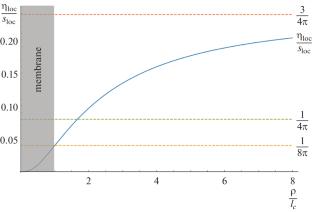Unruh效应和最小粘度
IF 0.4
4区 物理与天体物理
Q4 PHYSICS, NUCLEAR
引用次数: 0
摘要
闵可夫斯基真空被加速观察者视为具有有限温度的介质,这是众所周知的昂鲁效应的本质。结果表明,除了温度之外,加速系统中还存在有限剪切粘度,该粘度满足弦理论\(\eta/s=1/4\pi\)的下限。我们描述了相应的电磁场剪切粘度的推导。本文章由计算机程序翻译,如有差异,请以英文原文为准。

Unruh Effect and Minimum Viscosity
The Minkowski vacuum is perceived by an accelerated observer as a medium with a finite temperature, which is the essence of the well-known Unruh effect. It turns out that in addition to temperature, a finite shear viscosity appears in the accelerated system, and this viscosity satisfies the lower limit from string theory \(\eta/s=1/4\pi\). We describe the derivation of the corresponding shear viscosity for electromagnetic field.
求助全文
通过发布文献求助,成功后即可免费获取论文全文。
去求助
来源期刊

Physics of Atomic Nuclei
物理-物理:核物理
CiteScore
0.60
自引率
25.00%
发文量
56
审稿时长
3-6 weeks
期刊介绍:
Physics of Atomic Nuclei is a journal that covers experimental and theoretical studies of nuclear physics: nuclear structure, spectra, and properties; radiation, fission, and nuclear reactions induced by photons, leptons, hadrons, and nuclei; fundamental interactions and symmetries; hadrons (with light, strange, charm, and bottom quarks); particle collisions at high and superhigh energies; gauge and unified quantum field theories, quark models, supersymmetry and supergravity, astrophysics and cosmology.
 求助内容:
求助内容: 应助结果提醒方式:
应助结果提醒方式:


